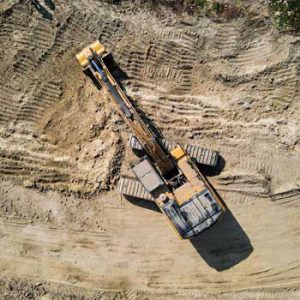Parents want the best for their children. You want your kids to be happy and successful – part of that means helping them find a great career path.
Construction careers can offer good wages and high job satisfaction, and there is a massive demand for new craft professionals.
However, despite the many positives of pursuing a career in construction, parents often find themselves apprehensive about their children following this path. More than 70% of surveyed parents would be unlikely or very unlikely to advise their child to choose a career in construction.
One of the primary causes of parental concern? Safety. Construction is often perceived as a dangerous industry, and parents want their children to stay safe and healthy.
If you are a parent hesitant about your child wanting to pursue a career in construction, we are here to help ease your mind. Here are a few things you need to know about construction safety.

When a lot of people think of construction, the iconic black-and-white photograph of men eating lunch on a suspended steel beam at the top of an under-construction skyscraper is often the first thing that comes to mind.
That photo, taken in the early 1930s, is commonly cited as a representation of the American spirit – and a source of fear. With the great heights, lack of protective equipment and casual nature of the photo, what many people take away from that image is a belief that construction is dangerous.
However, the industry has come a long way since that picture taken almost a century ago. Modern construction can still have some natural dangers, but the field is safer than it ever has been before.
Safety is now a core part of the culture at any construction company. The top goal for any project is for everyone to go home healthy and well at the end of the day. Some of the ways that safety has taken a hold in construction include:
Construction companies have a lot of incentives to do their best to ensure the safety of their employees. On top of general concern for well-being, companies also stand to benefit from good safety records for the purposes of winning project bids and other accolades that can help their business. And with a growing workforce shortage, having reliable professionals miss time due to injury can hold up entire projects.
The idea that safety isn’t important in construction is antiquated notion. Safety is a top priority in the modern industry.
Along with the greater emphasis on safety training and following proper procedures in construction culture, the implementation of new technology is helping make the industry even safer.
Here are a few examples of advancements in tech being used in construction:
Modeling software like CAD (computer-aided design) and BIM (building information modeling) help engineers, architects and managers look at a construction project in a detailed, three-dimensional space even before any dirt is moved.
These planning tools allow designers to spot potential hazards and risks ahead of time and either improve the design or give the crews advance notice and help them create procedures to navigate them without incident.
Like 3D modeling, VR gives construction teams the ability to step on site without actually stepping on site. Using VR can help ensure construction teams are prepared for the job ahead.
Virtual reality and augmented reality are also becoming an important asset in the training of new craft professionals. Tools like the Miller AugmentedArc or CM Labs Vortex crane and heavy equipment simulators help young students get a feel for the work before trying out the real thing for the first time.
Drones are becoming an increasingly popular tool on construction sites. One of the most important ways drones help is by allowing site inspectors to conduct inspections remotely, preventing them from needing to enter hazardous areas themselves.
Drones can also be used to monitor projects in real time, helping to spot potential problems or unsafe site conditions and warning managers and crews before they encounter them.

As other technological advancements are made and applied to the field, they are sure to bring even more enhancements to construction site safety.
When many people think of construction workers, they think of hard, strenuous manual labor.
While construction often involves hands-on and physical work, the industry is full of a diverse range of different career options. “Working in construction” could mean being a carpenter, welder or pipefitter. It could also mean being a crane or excavator operator or an architect. It might even mean being an accountant, lawyer or marketing professional.
There are many different roles to fill in construction, and they all involve unique skills, training and working conditions. Researching the different career options in construction can help you and your children find a path that is a great fit.
Parents are right to want their children to stay safe as they grow up and enter the workforce. While construction may have a reputation of being dangerous, modern advancements in culture, training and technology have helped make safety a priority. If your children want to pursue a career where they can work with their hands, earn some good money and have opportunities to make a difference, construction is worthy of consideration.
Check out more reasons why parents should discover more about construction.